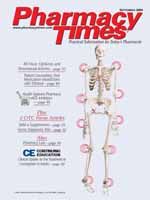One Pharmacist's View of the Automation Decision
Any entrepreneur will tell you that success beyond your expectations presents challenges. In early 2003, my pharmacy, Archdale Drug, was struggling to keep up: business was growing about 25% per year. Although we knew that we were doing something right, in terms of our staff and patient service, our resources were becoming taxed. In a 10-hour day, we had more work than we could handle. I was considering hiring another pharmacist and another pharmacy technician.
Whereas additional hires offered a known path for meeting current demand, we also were considering a road less traveled. New robotic dispensing technology held the potential to exponentially expand our capacity to not only satisfy current demand, but also expand our "bandwidth" far beyond what we considered our upper limit.
The risks of going in the direction of automation were that we had no way to ensure that the growth pattern would continue, and the technology itself was relatively new. The decision required a "Build it, and they will come" vision.
Decision Factors
In making a decision about automation versus additional hires, we considered a few important factors:
- Hiring quality employees who would further enhance our pharmacy's culture and customer service commitment can be challenging, particularly in the midst of a pharmacist shortage.
- Our space resources are finite in the short term, so packing more people into the same space was not appealing. The space limitations also put restrictions on the automation solutions we could consider, because several would require significant renovation.
- Whereas hiring might relieve the "pressure cooker" and help us keep up, it would not create enough breathing room for future expansion.
- Cost was not a significant factor, because hiring versus automating tilted us slightly on the side of automating.
The Parata Robotic Dispensing System (RDS) tipped the scales in favor of automation for what seems like a simple reason: it fit. I did not want to rearrange my entire pharmacy to accommodate new technology. If it did not fit my pharmacy layout, I did not care if it could do back flips. At 12 square feet, the Parata RDS rolled in the front door and replaced just a standard shelving unit. It introduced patented, new counting technology that redefined what we considered our capacity to be. The Parata RDS processes a prescription in about 20 seconds, a cycle time that includes selecting and labeling a vial, counting medication, capping, and sorting by patient last name.
Expanded Productivity, Enhanced Service
Archdale Drug took the plunge to deploy the Parata RDS in mid-2003. At the time we made the commitment, my hope was simply to catch up. The results far exceeded our expectations.
Our business has grown by 20% in just the past 6 months. Volume increases since the installation of the automated prescription-processing system are linked directly with shorter customer wait times, more time for pharmacists to spend with customers, and other service benefits.
Customers cannot believe that they can get their prescriptions in 3 or 4 minutes, instead of in our former 20-minute wait (or in waits of more than an hour at nearby competitors). Customers are telling us how satisfied they are, and they are telling their friends. Much of our increased volume comes from new customers to the store.
Prior to automating, our average daily volume of prescriptions was about 400. It is now consistently in the mid- 500s, which has significantly accelerated our projected return on investment (ROI). The time to ROI was about half of what the pharmacy estimates that it would have been if we had hired a full-time pharmacist.
Furthermore, we have not yet touched our capacity. I think that we can sustain 700 scripts a day without changing anything. Last year Archdale's highest daily record was 800 prescriptions. Within 6 months of installing the Parata RDS, the pharmacy hit a new record of 1100, and it has now surpassed 800 about a dozen times. A day with that volume used to be a nightmare day. Now it just feels like a regular, busy day. Even with its increased business volume, Archdale Drug anticipates maintaining the current staff for 3 to 4 years before making additional hires.
Staff Quality of Life
I now have more time off. I am working about 36 to 38 hours a week. Employees are spending more time interacting with customers, because the Parata RDS handles approximately 60% of the prescription-processing workload. Our technicians have more time for other tasks as well.
Now that the Parata RDS is part of our workflow, you could not get our robotic dispensing machine out of here. We felt that way after only 2 weeks.
Mr. Hoskins is the owner of Archdale Drug, Archdale, NC.

